T‑Fractal
The Sierpinski Tetrahedron is an Imaginary Cube that is also a fractal. Are there other fractal Imaginary Cubes? In our search we found the next two “simplest” examples: fractals whose base shapes are the puzzle solids H and T. We begin with the T‑Fractal.
The solid T is shown below.
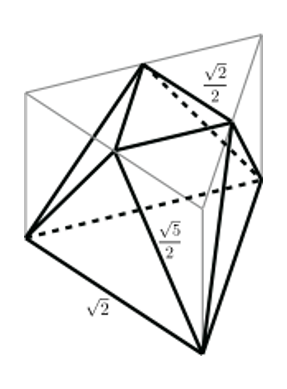
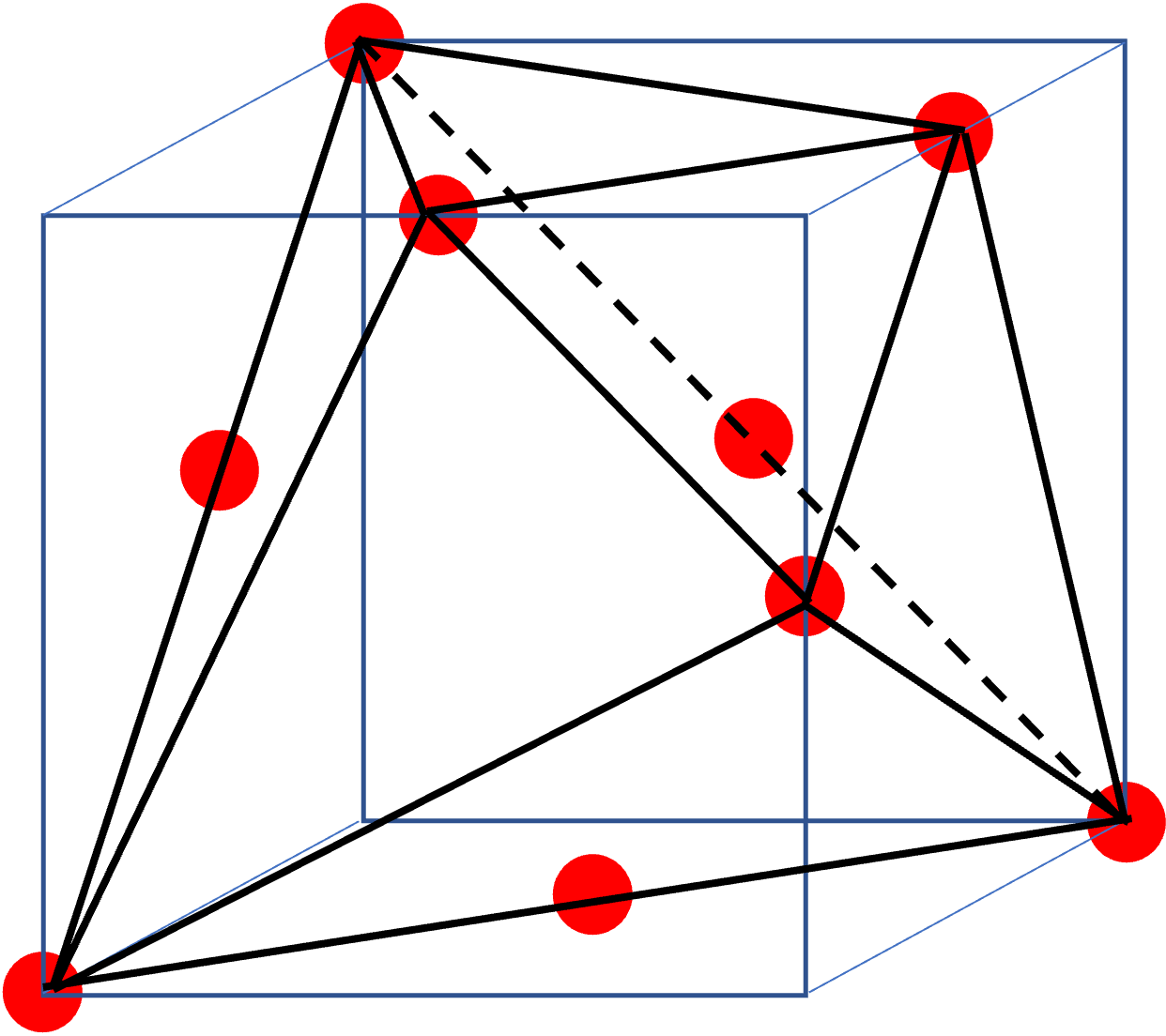
The T‑Fractal is generated by repeatedly assembling scaled‑down copies of T. Mark the nine red points in the figure above (the six vertices of T plus the mid‑points of its three base edges). Shrink T by 1/3 about each of these nine points and assemble the copies to obtain T1. Apply the same procedure to T1 to get T2, and so on, producing the sequence T, T1, T2, …

The limiting solid (more precisely, the common intersection of all Tn) is the T‑Fractal. Applying the same 1/3‑scaling operation to the T‑Fractal itself reproduces the original, so it is a self‑similar object built from nine copies scaled by 1/3.
T‑Fractal as an Imaginary Cube
The photos below show 3‑D‑printed models of T, T1, T2, T3, … packed inside cubic boxes. Every one of these models is an Imaginary Cube.
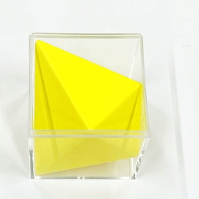
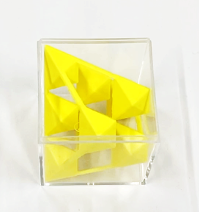
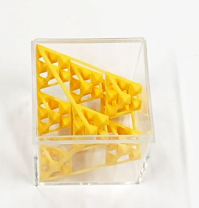
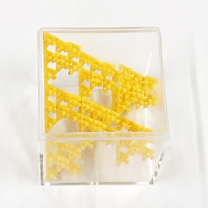
The limiting T‑Fractal itself is also an Imaginary Cube.
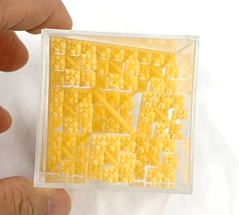
Shadows of the T‑Fractal
The shadows (projections) of the T‑Fractal are self‑similar as well. Rotating a physical approximation under a light source produces a continuum of silhouettes like those below. For the ideal fractal, almost all shadows have area 0, but some—including the square and the three shown here—have positive area.
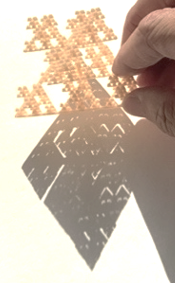
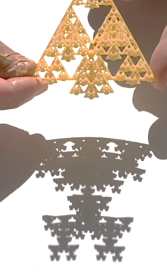
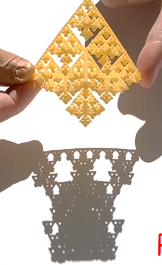
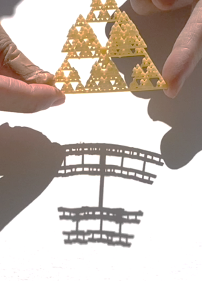
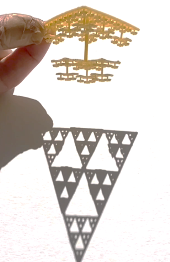
The second shadow has the outline shown below. This outline is self‑similar: it can be reconstructed from nine copies scaled by 1/3. Can you see how?
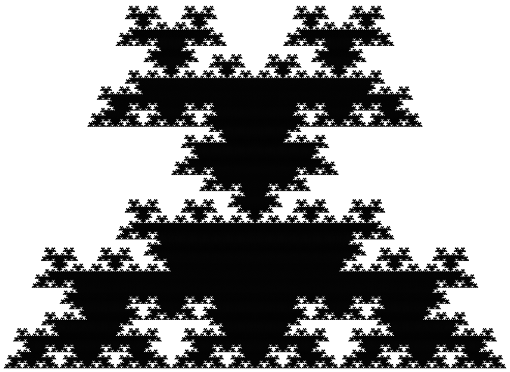
In the colored version each color is one of the nine scaled copies; taken together they reproduce the original shape.
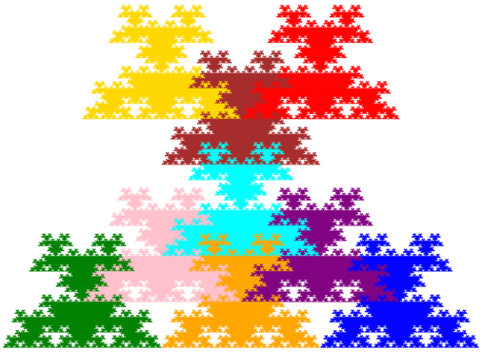
Which directions of light produce shadows with positive area? This question is discussed in the chapter Fractal Shadows.